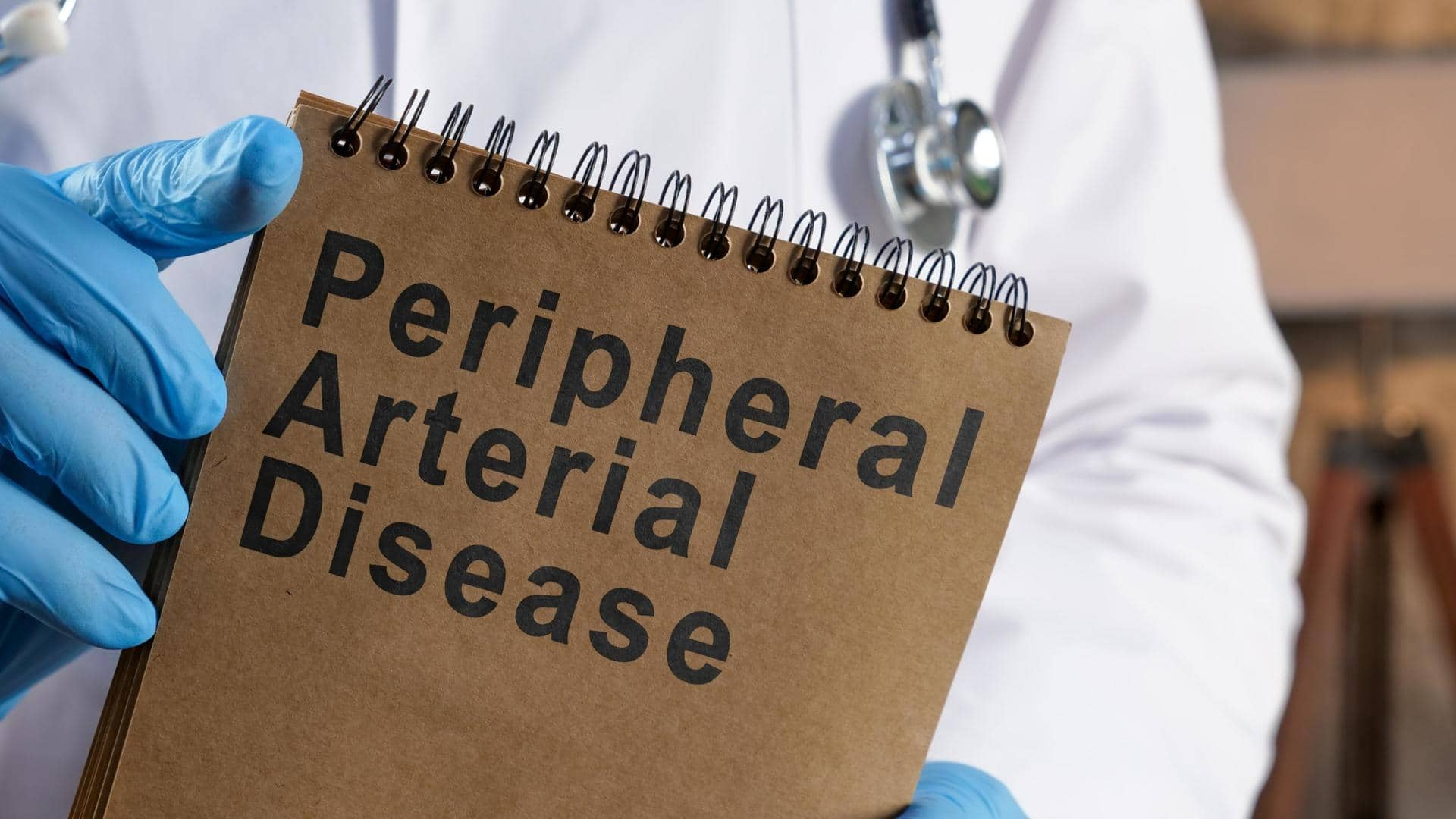
Peripheral arterial disease: Symptoms, causes, and treatment
What's the story
Peripheral arterial disease (PAD) is a big risk for heart attacks and strokes. It is more common in African-Americans, compared to other groups. Men are at a slightly higher risk of developing PAD than women. Smokers are also more likely to develop this condition. Keep reading to learn more about the symptoms, causes, and treatment of this disease and how it affects your health.
PAD
What is peripheral arterial disease?
Peripheral arterial disease is a common problem where narrow blood vessels limit the flow of blood to the arms or legs. In this condition, the legs (usually) don't get enough blood to meet their needs, which can lead to pain while walking and other symptoms. It is usually a sign of a buildup of fatty deposits in the arteries, known as atherosclerosis.
Symptoms
What are the symptoms of PAD?
Many people with PAD are unaware they have it because there are often no symptoms. However, some possible signs include hair loss on the feet and legs, pain in the thigh or calf muscles while walking or climbing stairs, and numbness in the legs. It can also cause slow-growing and brittle toenails, difficulty finding a pulse in the leg, and erectile dysfunction in men.
Causes
What causes PAD?
PAD is primarily caused by a condition called atherosclerosis, where fatty material accumulates within the arteries over time. This build-up gradually narrows the arteries, restricting blood flow. Less common factors contributing to PAD include blood clots forming in the arteries, injuries to the limbs, and atypical muscular or ligament structures. In simpler terms, the arteries get blocked by fat, which is the usual culprit.
Risk factors
What are the risk factors for PAD?
Having conditions like diabetes, smoking, obesity, high blood pressure, age, high cholesterol, a family history of heart disease, or elevated levels of C-reactive protein or homocysteine can raise the risk of developing PAD. If you already have heart disease, there's a one-in-three chance you may also have PAD. Smoking raises your risk for PAD four times compared to nonsmokers.
Prevention
What preventive measures can you take?
There are several key steps you can take to prevent PAD. Firstly, avoid smoking, as it is the single biggest risk factor that is in your control. Secondly, maintain healthy levels of cholesterol and blood pressure. If you have diabetes, it is crucial to control your blood sugar levels. Adopting a nutritious diet and engaging in regular exercise are essential too.
Treatment
How is PAD treated?
PAD can be treated in different ways. One method is angioplasty, which involves inserting a thin tube with a small balloon into the artery to widen it and restore blood flow by pushing out plaque. Medications like cilostazol and pentoxifylline can help relieve symptoms and improve circulation. In more serious cases, a bypass graft surgery can redirect blood flow around a blocked artery.